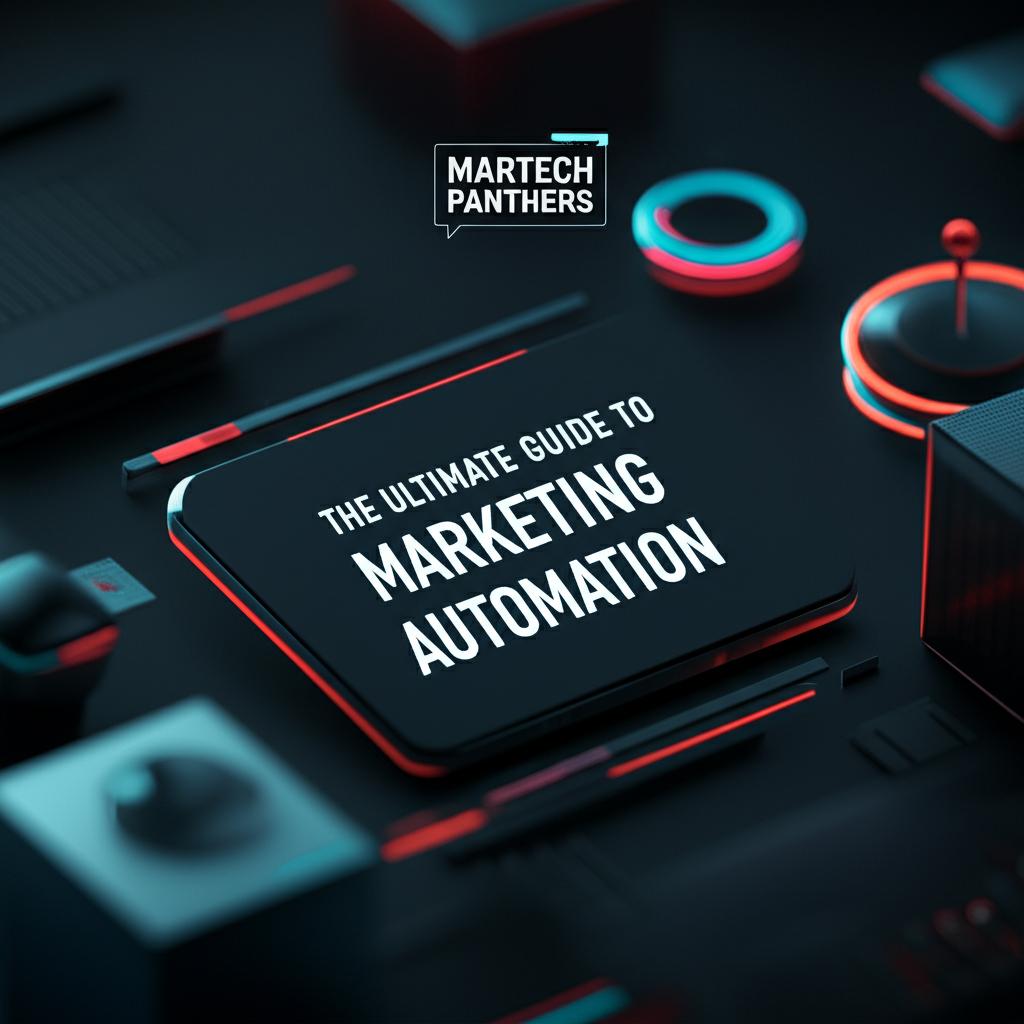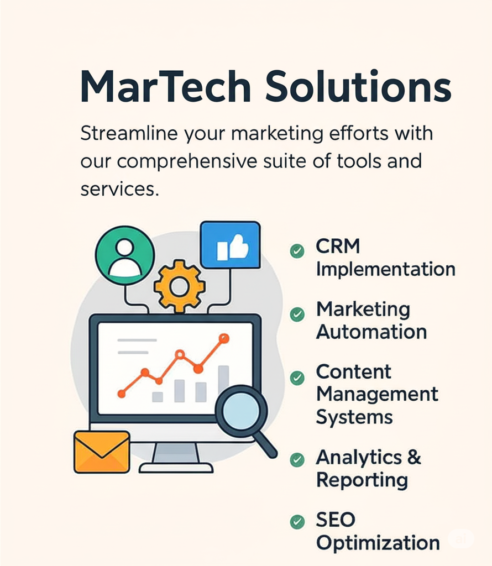
In today’s fast-paced digital landscape, businesses are constantly seeking innovative ways to streamline operations, engage customers, and drive growth. One of the most transformative solutions to emerge in recent years is marketing automation. Far more than just a buzzword, marketing automation is a powerful technological approach that revolutionizes how companies connect with their audience, manage leads, and execute campaigns with unparalleled efficiency.
What is Marketing Automation?
At its core, marketing automation refers to the software and strategies that allow businesses to automate repetitive marketing tasks. This includes actions such as email marketing, social media posting, ad campaigns, and even website interactions. The goal is to make these processes more efficient, personalized, and measurable, freeing up marketing teams to focus on strategy and creativity rather peaking in manual, time-consuming efforts.
Think of it as a sophisticated system that nurtures leads from initial contact through the entire sales funnel, delivering the right message to the right person at the right time, all without constant human intervention. This level of precision and consistency is incredibly difficult to achieve manually, especially as a business scales.
Why is Marketing Automation Essential for Businesses?
The adoption of marketing automation is no longer a luxury but a necessity for businesses aiming to stay competitive. Its benefits span across various aspects of marketing and sales operations.
Efficiency and Time Savings
- Automated Workflows: Marketing automation platforms allow you to set up predefined workflows based on customer behavior. For instance, if a user downloads an ebook, an automated email sequence can be triggered to send follow-up content.
- Reduced Manual Tasks: Tasks like sending welcome emails, segmenting lists, or posting on social media can be scheduled and executed automatically, significantly reducing the burden on your marketing team. This translates directly into more time for strategic planning and less for repetitive execution.
Enhanced Customer Experience and Personalization
- Tailored Content Delivery: Marketing automation enables hyper-personalization. Based on data like browsing history, past purchases, or demographic information, the system can deliver highly relevant content, making customers feel understood and valued.
- Consistent Communication: It ensures that customers receive consistent and timely communications across various touchpoints, building stronger relationships and fostering loyalty. A customer who feels their needs are anticipated is more likely to remain engaged.
Improved ROI and Revenue Growth
- Higher Conversion Rates: By nurturing leads with relevant content at each stage of their journey, marketing automation significantly increases the likelihood of converting leads into paying customers. Personalized content drives engagement, which in turn drives conversions.
- Better Lead Quality: Lead scoring, a key feature of marketing automation, helps identify and prioritize the most promising leads, ensuring that sales teams focus their efforts on individuals most likely to close. This optimizes sales efforts and reduces wasted time.
- Measurable Results: Most platforms come with robust analytics, allowing businesses to track the performance of their campaigns, identify what works, and optimize strategies for better returns on investment.
Scalability
- Grow Without Limits: As your business expands, marketing automation scales with it. You can manage a growing database of leads and customers without proportionally increasing your marketing headcount, making growth sustainable and cost-effective.
- Consistent Brand Messaging: Automation ensures that your brand message remains consistent across all automated communications, maintaining brand integrity even as your audience grows.
Key Components of Marketing Automation
A comprehensive marketing automation strategy typically integrates several core functionalities:
Email Marketing Automation
This is perhaps the most widely recognized component. It involves automating email campaigns such as welcome series, abandoned cart reminders, re-engagement emails, and post-purchase follow-ups. Emails can be triggered by specific user actions or predefined schedules, ensuring timely and relevant communication.
Lead Nurturing
Lead nurturing is the process of building relationships with prospects, regardless of their readiness to buy. Marketing automation facilitates this by delivering a series of valuable content pieces (e.g., blog posts, case studies, webinars) over time, moving leads progressively through the sales funnel. This systematic approach educates and informs leads, guiding them towards a purchase decision.
Lead Scoring
Lead scoring assigns a numerical value to each lead based on their engagement with your marketing efforts and their demographic information. For example, visiting a pricing page might add 10 points, while opening an email adds 2 points. This helps sales teams prioritize hot leads and avoid wasting time on those less likely to convert.
CRM Integration
Seamless integration with Customer Relationship Management (CRM) systems is crucial. This allows for a unified view of customer data, ensuring that sales and marketing teams are always on the same page. When marketing automation and CRM talk to each other, it creates a powerful synergy that optimizes the entire customer journey.
Social Media Automation
Scheduling posts, monitoring mentions, and even automating responses to certain inquiries on social media platforms can be managed through marketing automation tools. This ensures a consistent and active social presence without constant manual effort.
Analytics and Reporting
Robust reporting features are vital for understanding campaign performance. Marketing automation platforms provide detailed insights into email open rates, click-through rates, website visitor behavior, conversion paths, and ROI. This data-driven approach allows for continuous optimization.

How Marketing Automation Works: Workflow Examples
To better understand the practical application of marketing automation, let’s look at a few common workflows:
Welcome Series for New Subscribers
When a new user signs up for your newsletter, marketing automation can trigger a welcome email immediately. Follow-up emails can then be scheduled over the next few days or weeks, introducing your brand, sharing popular content, and perhaps offering a special discount. This ensures a warm and informative onboarding experience.
Abandoned Cart Recovery
If a customer adds items to their online shopping cart but leaves without completing the purchase, marketing automation can send a series of reminder emails. The first might be a gentle nudge, the second could offer a small incentive, and the third might highlight product benefits or customer reviews. This targeted approach helps recover potentially lost sales.
Re-engagement Campaigns
For inactive customers or subscribers, marketing automation can trigger re-engagement campaigns. These might include emails offering exclusive content, reminding them of your value proposition, or prompting them to update their preferences. The goal is to reignite their interest and bring them back into your active audience.
Event Promotion and Follow-up
When promoting a webinar or event, marketing automation can handle registration confirmations, reminder emails leading up to the event, and post-event follow-ups (e.g., sending a recording or related resources). This ensures attendees are well-informed and engaged throughout the process.
Choosing the Right Marketing Automation Platform
Selecting the ideal marketing automation software is a critical decision. Consider the following factors:
- Features and Functionality: Does it offer email marketing, lead scoring, CRM integration, landing page builders, and analytics that align with your needs?
- Ease of Use: Is the interface intuitive? Will your team be able to quickly learn and utilize the platform effectively?
- Integration Capabilities: Can it seamlessly connect with your existing CRM, CMS, and other essential business tools?
- Scalability: Can the platform grow with your business? Does it support your anticipated future needs in terms of contacts and campaigns?
- Pricing: Evaluate the cost structure, including tiered pricing based on contacts or features, and ensure it fits within your budget.
- Customer Support and Training: What kind of support, onboarding, and training resources are available?
Best Practices for Successful Marketing Automation
Implementing marketing automation effectively requires more than just purchasing software; it demands a strategic approach.
- Define Clear Goals: What do you want to achieve? (e.g., increase lead conversion by X%, reduce sales cycle by Y days). Specific goals guide your automation strategy.
- Segment Your Audience: Don’t treat all leads the same. Segment your audience based on demographics, behavior, and interests to deliver highly relevant and personalized content.
- Personalize Content: Leverage the data you collect to personalize emails, landing pages, and offers. Generic content rarely resonates as strongly as tailored messages.
- Test and Optimize: Continuously A/B test your email subject lines, call-to-actions, and workflow paths. Analyze performance metrics and make data-driven adjustments to improve results.
- Don’t Forget Compliance: Ensure your marketing automation practices comply with data privacy regulations like GDPR and CCPA. Transparency and consent are paramount.
- Align Sales and Marketing: For optimal results, sales and marketing teams must work together, sharing insights and defining common goals for lead qualification and handover.
Challenges and How to Overcome Them
While the benefits are clear, some businesses face hurdles when implementing marketing automation.
- Implementation Complexity: Setting up sophisticated workflows can be complex. Overcome this by starting small, focusing on one or two key workflows, and gradually expanding. Consider professional services if needed.
- Data Quality Issues: Automation relies on clean, accurate data. Regularly audit and cleanse your CRM and marketing databases to ensure the information is reliable.
- Lack of Strategy: Without a clear strategy, automation can become haphazard. Develop a comprehensive plan that outlines your target audience, content strategy, and desired outcomes before diving into execution.
The Future of Marketing Automation
The field of marketing automation is continually evolving, with artificial intelligence (AI) and machine learning (ML) playing increasingly significant roles. Expect even more sophisticated personalization, predictive analytics to anticipate customer needs, and AI-driven content generation and optimization. The integration with emerging technologies like virtual reality (VR) and augmented reality (AR) also holds exciting potential for immersive customer experiences.
Conclusion: Embrace the Power of Marketing Automation
Marketing automation is a game-changer for businesses of all sizes. By automating repetitive tasks, enabling deep personalization, and providing invaluable insights, it empowers marketing teams to work smarter, not just harder. It frees up resources, enhances customer engagement, and ultimately drives measurable growth. If you haven’t yet explored the potential of marketing automation for your business, now is the time to invest in this transformative technology and unlock a new era of efficiency and success. Ready to take your marketing to the next level? Start by assessing your current marketing processes and identifying areas where automation can make the biggest impact.
📩 Want your workflows audited or optimized?
📞 Call us: +91 9762910165
📧 Email: info@martechpanthers.com
🌐 Visit: www.martechpanthers.com

